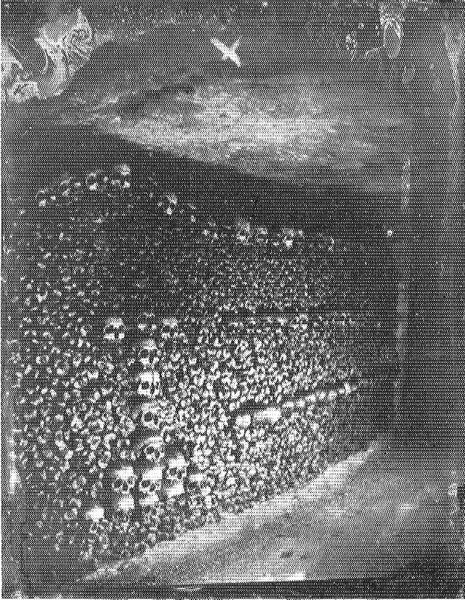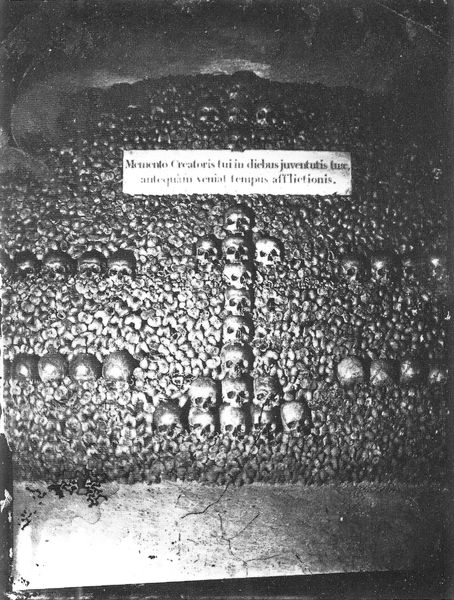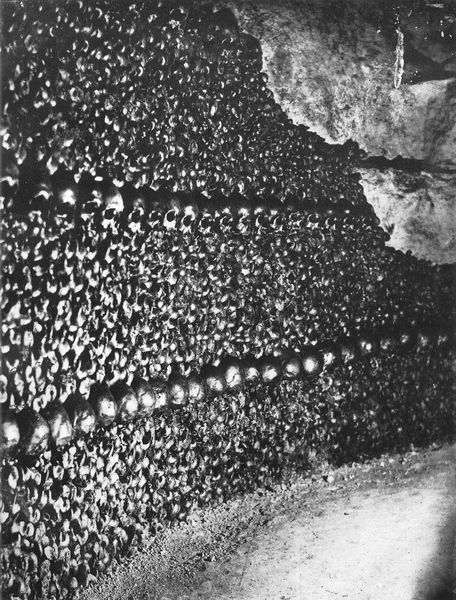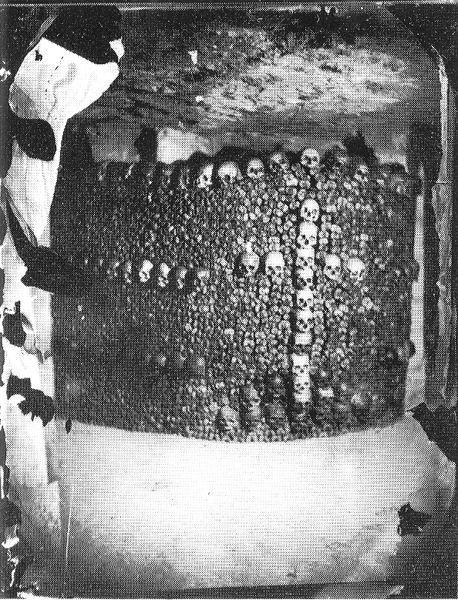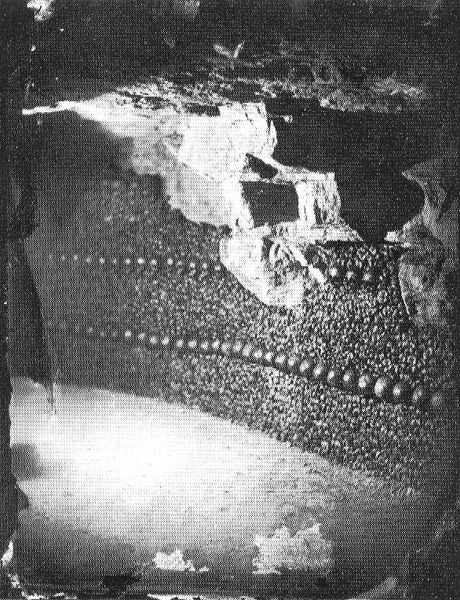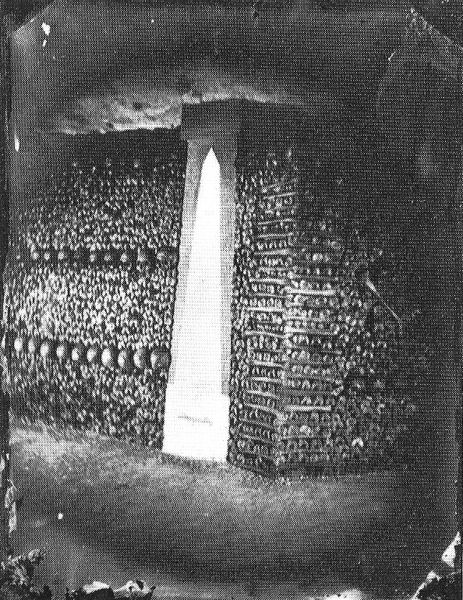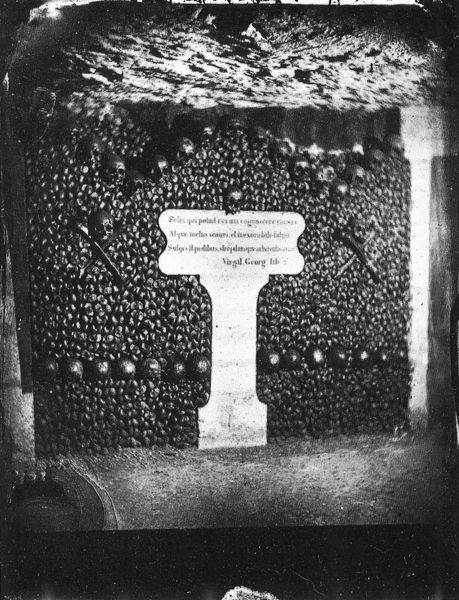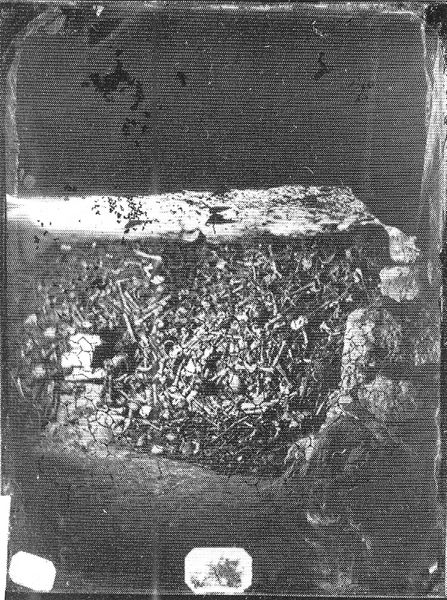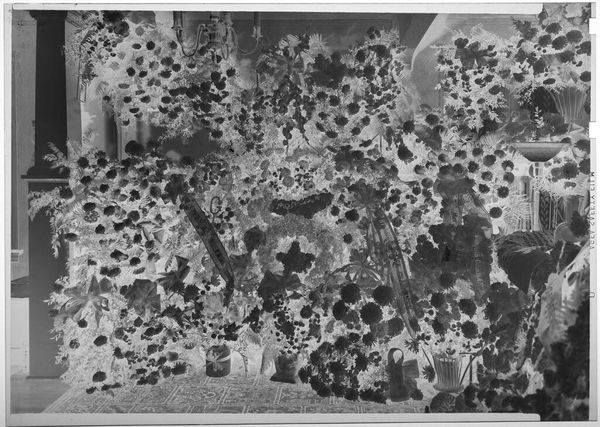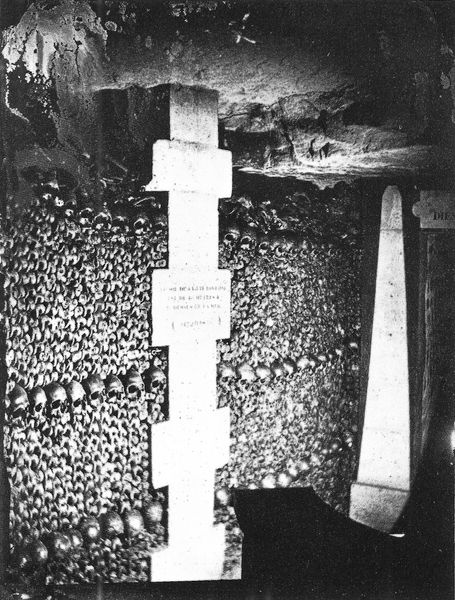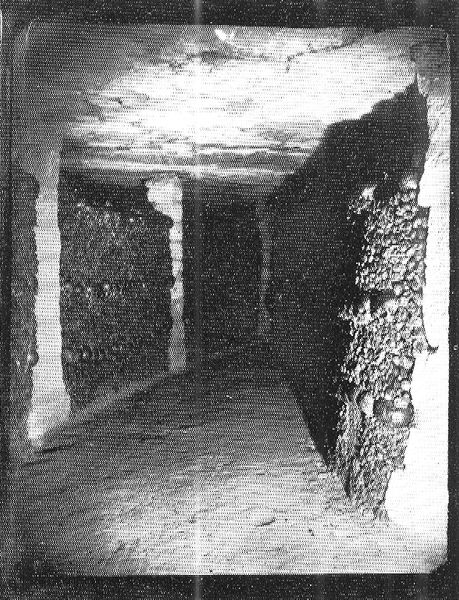
Copyright: Public domain
Félix Nadar captured this stark image of the Catacombs of Paris during the mid-19th century, a period of immense social change. The catacombs, repurposed from old stone mines, became the final resting place for millions due to overflowing cemeteries and public health crises in Paris. Nadar’s photograph isn't just a document of death; it's a stark reminder of urban inequalities and the vulnerability of human life. The anonymous bones reflect a democratic leveling in death, where class distinctions disappear. Yet, the very need for such a mass burial site speaks volumes about the unequal living conditions that disproportionately affected the working class and the poor. Nadar’s use of the then-new medium of photography to explore these subterranean spaces brings an immediacy to the experience of confronting mortality. The photograph forces us to contemplate our place in the grand sweep of history, and it serves as a potent symbol of our shared, fragile existence. It bridges the gap between the personal and the societal, prompting us to reflect on how we care for the living and remember the dead.
Comments
No comments
Be the first to comment and join the conversation on the ultimate creative platform.
